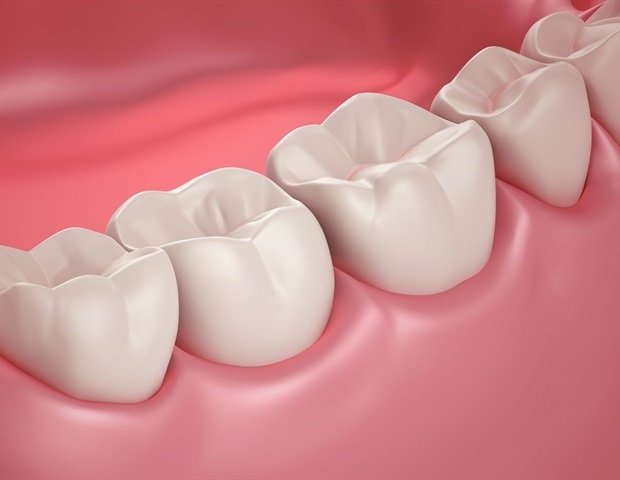Blog
Python-inspired gadget doubles energy in rotator cuff repairs
When most individuals reflect of pythons, they think about an enormous snake encircling and swallowing its prey. However did that pythons first grip their prey with their sharp, backward-curving tooth? Medical researchers possess lengthy identified that these tooth are completely suited to gripping smooth tissue slightly than reducing via it, however till now, nobody has been capable of apply this idea to surgical procedure. Through the years, mimicking these tooth for exhaust in surgical procedure has been a frequent subject of dialogue within the lab of Dr. Stavros Thomopoulos, professor of orthopedics and biomedical engineering at Columbia College.
Biomimetics is the important thing to novel examine
As a number one researcher centered on the growth and regeneration of the tendon-bone junction, Thomopoulos is significantly taken with advancing the tendon-bone restore required for rotator cuff restore and anterior cruciate ligament reconstruction. In a paper printed at present, his crew reviews that they possess developed a python-tooth-inspired gadget to enrich present rotator cuff suture restore and located that it almost doubled the restore energy.
“Over the course of our lives, greater than half of of us will maintain a rotator cuff tear, leading to shoulder ache and restricted mobility,” mentioned Thomopoulos, who’s the Robert E. Carroll and Jane Chace Carroll Professor of Biomechanics (in Orthopaedic Surgical procedure and Biomedical Engineering) at Columbia Engineering and the Vagelos School of Physicians and Surgeons of Columbia College. “The very best medical intervention is rotator cuff surgical procedure, however a remarkably excessive proportion of those repairs fail inside simply a couple of months. Our biomimetic method, which follows the design of python tooth, helps reattach tendons to bone extra securely. The gadget not solely will increase the energy of the restore, however may also be custom-made to the affected person. We’re actually excited in regards to the potential of our gadget to enhance the therapy of rotator cuff accidents.”
Rotator cuff accidents
Rotator cuff tears are amongst probably the most frequent tendon accidents, affecting greater than 17 million folks in the USA every year. The frequency of the damage will increase with age: greater than 40% of the inhabitants over 65 years of age will endure a rotator cuff tear.
As a result of rotator cuff tears usually happen at the location the place the tendon inserts into the bone, rotator cuff restore goals to anatomically restore the tendon attachment. Surgical restore is the first therapy to revive shoulder perform. Greater than 600,000 procedures are carried out yearly in the USA, costing $3 billion.
Nonetheless, efficiently reattaching the tendon to the bone stays a big medical problem. Excessive failure charges happen following surgical procedure, growing with the age of the affected person and the severity of the tear. These charges vary from 20% in youthful sufferers with minor tears to a staggering 94% in older sufferers with large tears. Essentially the most frequent failure in rotator cuff repairs is sutures that tear the tendon at the 2 or four gripping factors the place forces are concentrated.
Though there possess been advances in rotator cuff restore over the previous 20 years, the essential method of sewing two tissues collectively has remained largely unchanged. It nonetheless depends on sutures that switch pressure at high-stress gripping factors. After surgical procedure to reattach the tendon to bone, sutures at these high-stress areas can tear the tendons, a phenomenon often known as “suture pull-through” or “cheese-wire formation,” which leads to gaps or tears on the restore web site.
“We needed to see if we may develop a gadget that mimics the form of python tooth, successfully grips smooth tissue with out tearing it, and helps cut back the chance of tendon re-tear after rotator cuff restore,” mentioned Iden Kurtaliaj, the examine’s lead writer and a former biomedical engineering graduate pupil in Thomopoulos’ lab.
The gadget
The crew’s unique concept was to repeat the form of python tooth, however they went a lot additional, utilizing simulations, 3D printing, and cadaver experiments to discover the connection between tooth form and gripping/reducing mechanics. Kurtaliaj made a collection of tooth designs, optimizing particular person tooth, rows of tooth, and eventually a rotator cuff-specific row of tooth. The discontinuance end result was a biomimetic gadget comprised of a biocompatible resin—a row of tooth on a curved base—that may grip tendons however not cleave. The tooth are comparatively small—3mm excessive for a human rotator cuff, about half of the size of an everyday staple—so that they do not puncture the tendon. The bottom may be custom-made utilizing 3D printing to match the patient-specific curvature of the humeral head on the attachment web site of the supraspinatus tendon (probably the most generally torn rotator cuff tendon).
We particularly designed it in order that surgeons do not possess to desert their present method – they will merely add the gadget and improve the energy of their restore.”
Iden Kurtaliaj, lead writer of the examine
The crew
Kurtaliaj performed the analysis as a graduate pupil below the supervision of Dr. Stavros Thomopoulos and Dr. Man Genin, the Harold and Kathleen Faught Chair in Mechanical Engineering at Washington College in St. Louis, with enter on medical implementation from Dr. William Levine, chairman of the Division of Orthopaedic Surgical procedure on the School of Physicians and Surgeons of Columbia College.
“As a result of of our lab’s shut collaboration with orthopedic surgeons, we have been significantly lucky to obtain enter from Dr. Levine and different surgeons at Columbia all through the gadget’s design growth course of,” mentioned Thomopoulos.
Subsequent Steps
The researchers are presently engaged on growing a bioabsorbable model of the gadget that may degrade into bone because the rotator cuff heals, additional bettering medical applicability. Also they are making ready for a pre-approval assembly with the FDA to facilitate the commercialization of their gadget.
Supply:
Journal reference:
Kurtaliaj, I., (2024) Python tooth-inspired fixation gadget for improved rotator cuff restoredoi.org/10.1126/sciadv.adl5270.

